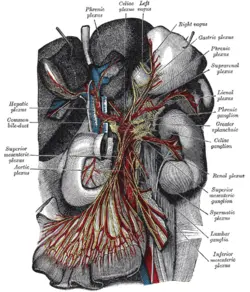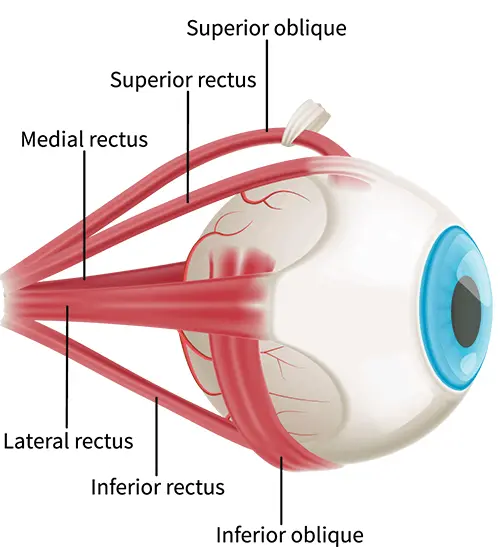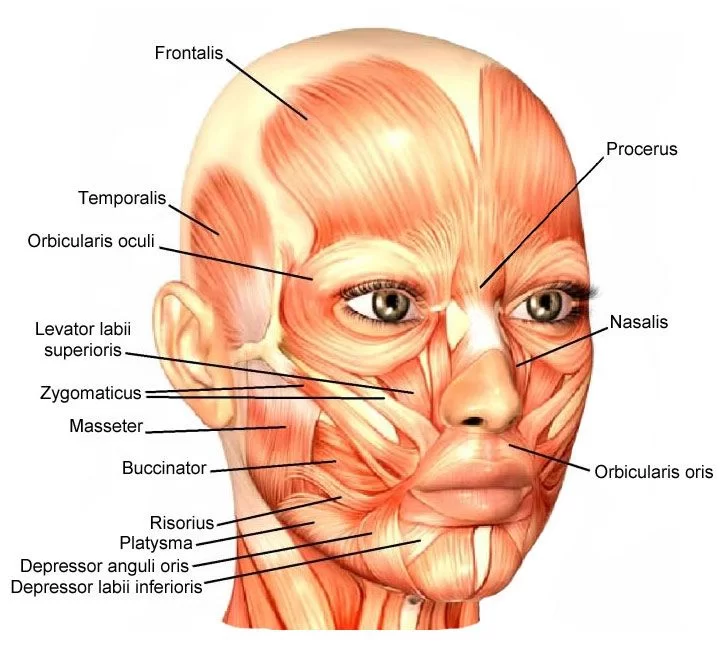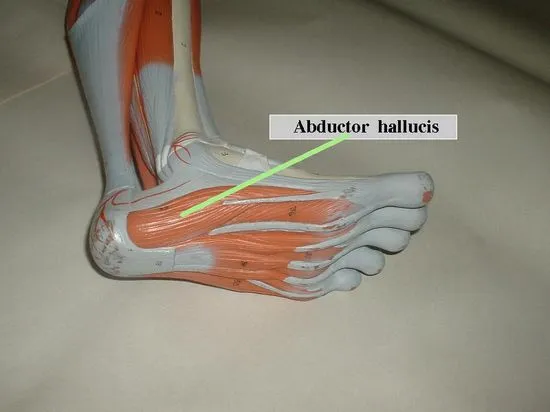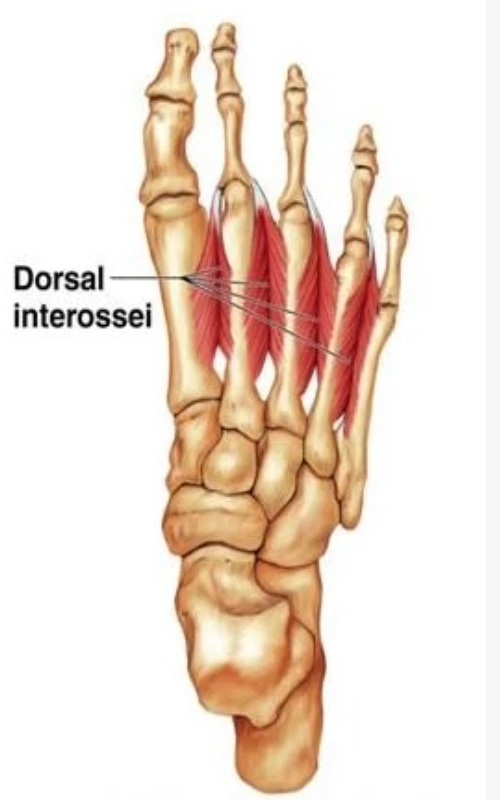Celiac Plexus
Introduction of the celiac plexus
The celiac (solar) plexus is an autonomic nervous plexus that consists of the interconnected paraaortic ganglia, situated around the roots of the major abdominal aorta branches.
The function of the celiac plexus is to collect both parasympathetic and sympathetic put-in from the vagus nerve (CN X) and splanchnic nerves and to convey their respective postsynaptic outputs to the abdominal viscera.
Anatomy of the celiac plexus
The celiac plexus comprise the celiac, superior mesenteric, and renal ganglia which are develop surrounding the roots of the celiac trunk, superior mesenteric, and renal arteries. For their paraaortic area, these ganglia are also called prevertebral (paraaortic) ganglia. Ganglia are interconnected in the smaller celiac, superior mesenteric, and renal plexuses, which together contain one large celiac (solar) plexus.
The celiac plexus expand parasympathetic, sympathetic, and nociceptive fibers. The parasympathetic position for the celiac plexus is derived from the vagus nerve (CN X), while the sympathetic insertion is from the greater and lesser splanchnic nerves. Branches of the celiac plexus extend their target organs by forming the periarterial plexuses surrounding the branches of the abdominal aorta. Thus, the celiac plexus supplies the inferior aspect of the esophagus, stomach, pancreas, spleen, kidneys, liver, gallbladder, and small intestine.
The main function of the celiac plexus is to transmit visceral sensory impulses (like pain or reflexes) from the foregut(pharynx, esophagus, stomach, anterior part of intestine) and midgut (distal part of the duodenum, jejunum, ileum, cecum, and appendix, ascending colon much of transverse of the colon). It increases gland secretion and encourages peristalsis and digestion with its parasympathetic division. The sympathetic division inhibits peristalsis, constricts blood vessels, and redirects blood to the skeletal muscles.
Clinical relations of the celiac plexus
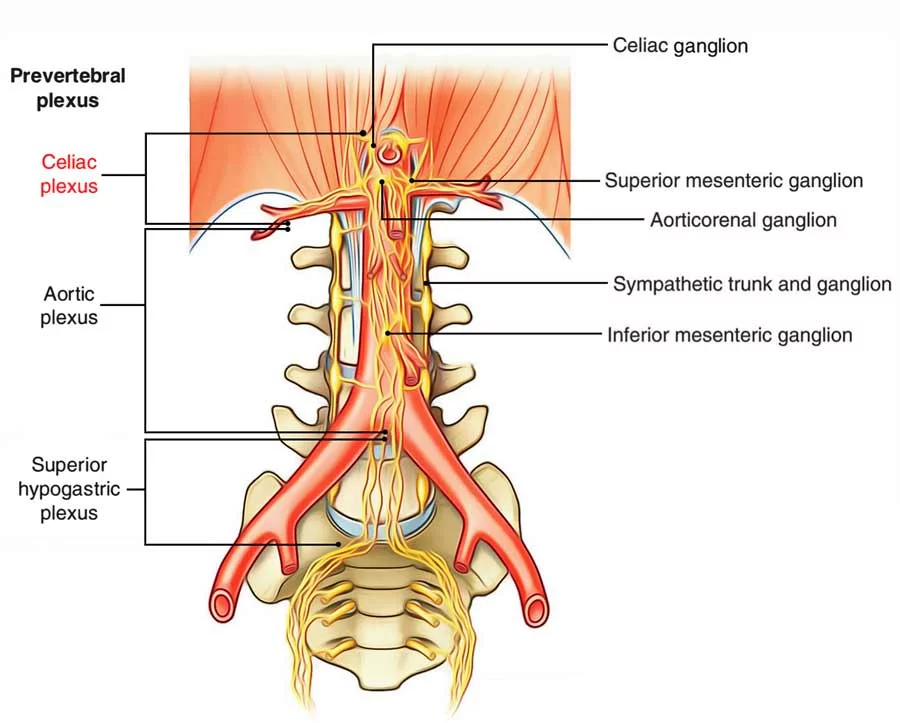
Celiac plexus block
People with chronic pancreatitis or malignancies in the upper abdominal region frequently suffer from unmanageable abdominal pain because of the constant stimulation of celiac plexus nociceptive fibers. In these cases, celiac plexus block is the therapeutic procedure that helps with decreasing the pain sensation. A celiac plexus block is performed by interjecting a thin needle via one’s posterior abdominal wall. The physician is guided by an X-ray, and once they get to the celiac plexus, they inject the painkiller. This procedure can decrease the pain from some weeks up to several years.
FAQ
What to expect after celiac plexus block?
The most common thing person may feel is soreness in the back at the injection region.
What causes celiac plexus pain?
frequent times, celiac plexus pain is caused by a growth or any abnormality in the pancreas that presses on the celiac plexus nerves. Another cause, nerve damage (normally caused by diabetes) causes pain signals in the abdomen.
How do you get celiac plexus?
A celiac plexus block is a group of nerve fibers that comes from the pancreas, stomach, liver, and part of the bowels. It is situated in the center of the abdomen, beneath the diaphragm.
How long does a celiac plexus nerve block last?
Most patients get 3 to 6 months of pain relief from a celiac plexus block. If pain occurs again person can get another nerve block. A neurolytic celiac plexus block damages the nerves to give long-term pain relief. a person generally doesn’t need another treatment.
How do you treat celiac pain?
The only way to treat the symptoms of celiac disease is to eat a strict gluten-free diet. Eating foods without gluten lets the small intestine heal, and stops future problems and inflammation. the person will need to ignore any foods made with wheat and wheat flour.
What does the celiac plexus carry?
The Celiac Plexus is made up of 1-5 ganglia that conduct afferent fibers from the upper abdominal organs (stomach to the mid transverse colon, including pancreas and gallbladder) as well as the sympathetic preganglionic fibers from (T5-T10), (T10-T11), & (T12) splanchnic nerves.
Where is the celiac plexus located?
retroperitoneum
The celiac plexus is the largest visceral plexus and is situated deep in the retroperitoneum, over the anterolateral aspect of the aorta, and around the origin of the celiac trunk
Can celiac disease damage the liver?
Celiac patients have both a 2-fold to 6-fold increased risk of later liver disease and an 8-fold increased risk of death from liver cirrhosis than the general population.
Does sugar affect celiac disease?
(Besides, research suggests sugar polyols, which are found in artificial sweeteners, can increase or worsen existing digestive symptoms. Therefore, they are the best for Celiac to avoid, as they are already prone to digestive distress.
What tests are done for celiac disease?
Two blood tests can help diagnose it:
Serology testing looks for antibodies in the blood. Increased levels of certain antibody proteins shows an immune reaction to gluten.
Genetic testing for human being leukocyte antigens (HLA-DQ2 and HLA-DQ8) can be used for the diagnosis of celiac disease.
What antibodies are present in celiac disease?
Serology. The most sensitive and particular antibodies for the confirmation of celiac disease are tissue transglutaminase IgA (T IgA), endomysial IgA, and reticulin IgA and correspond or correlate with the degree of mucosal damage.
What are the complications of celiac disease?
As coeliac disease causes the digestive system to work less effectively, severe cases can sometimes lead to a censorious lack of nutrients in the body. This is known as malnutrition, and it can result in the body being unable to function normally or recover from wounds or delay wound healing and infections.

